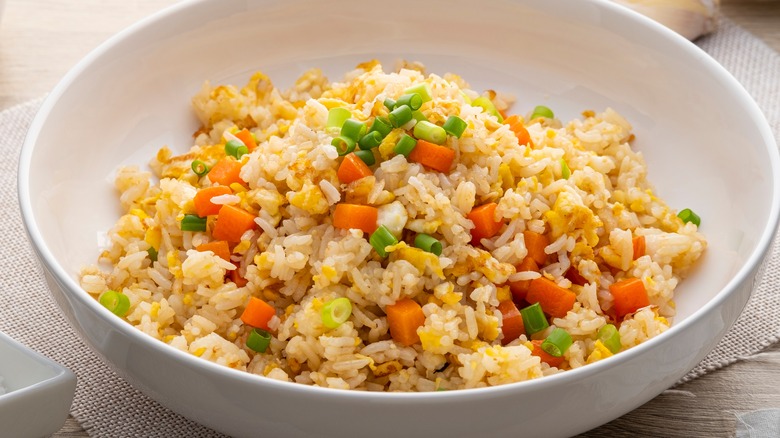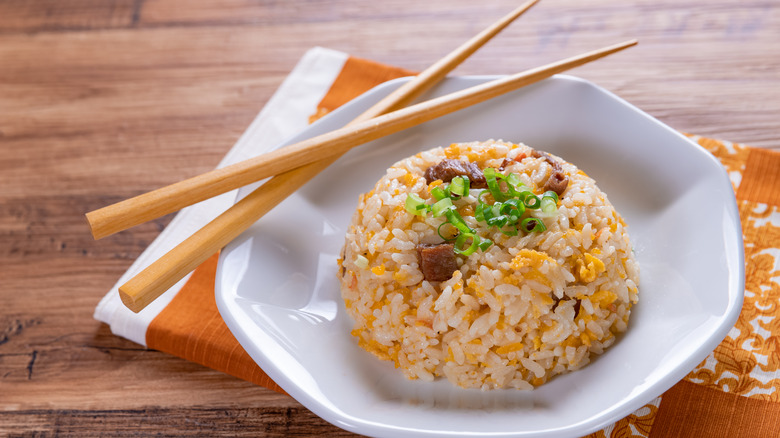Sugar Is The Secret Ingredient For Fried Rice That Rivals Takeout
Few delivery and take-out orders are as satisfying as warm containers of fried rice. Yet as simple as the recipe might appear, plenty of mistakes can be made when trying to replicate the dish you've sampled from your favorite restaurant. Cooking bits of chopped vegetables, seasoning, soy sauce, and oil, seems easy enough. However, when making fried rice at home, there's one ingredient you may be overlooking: Sugar.
Though you might not be able to pinpoint the sweet inclusion while digging into a take-out box and piling spoonsful of fluffy rice into your mouth, the addition of sugar is a common culinary technique practiced by restaurants. Not only can a touch of sugar build complexity and layers of flavor in the satisfying dish, but the right amount of sugar can help create flavor complexities that result from caramelization, a reaction that occurs when sugar is exposed to heat, changes color, and results in tasting notes that edge away from sugary sweet and closer to profiles of bitter, nutty caramel.
A touch of sweetness for maximum flavor
If you're hesitant about adding sugar to your recipe, fear not. You won't need much to transform your meal. Whether you choose to use brown sugar, maple syrup, or sprinkles of the sugar sitting in a bowl next to your coffee machine, spiking your fried rice recipe with a hit of sweet flavor can complement the other tasting profiles in your dish. Simply add the sweetener to your skillet alongside salt, pepper, and other flavorings of your choosing as you stir-fry your rice. The presence of sugar or another sweet substitute can help bring balance to the salty, savory elements in your meal, and if you're creating a fried rice recipe with kimchi, the sweetness can complement some of the sour elements from the fermented ingredient. Once you've tried sampling servings of your sugar-enhanced recipe, you'll have a difficult time refraining from scooping up seconds.

